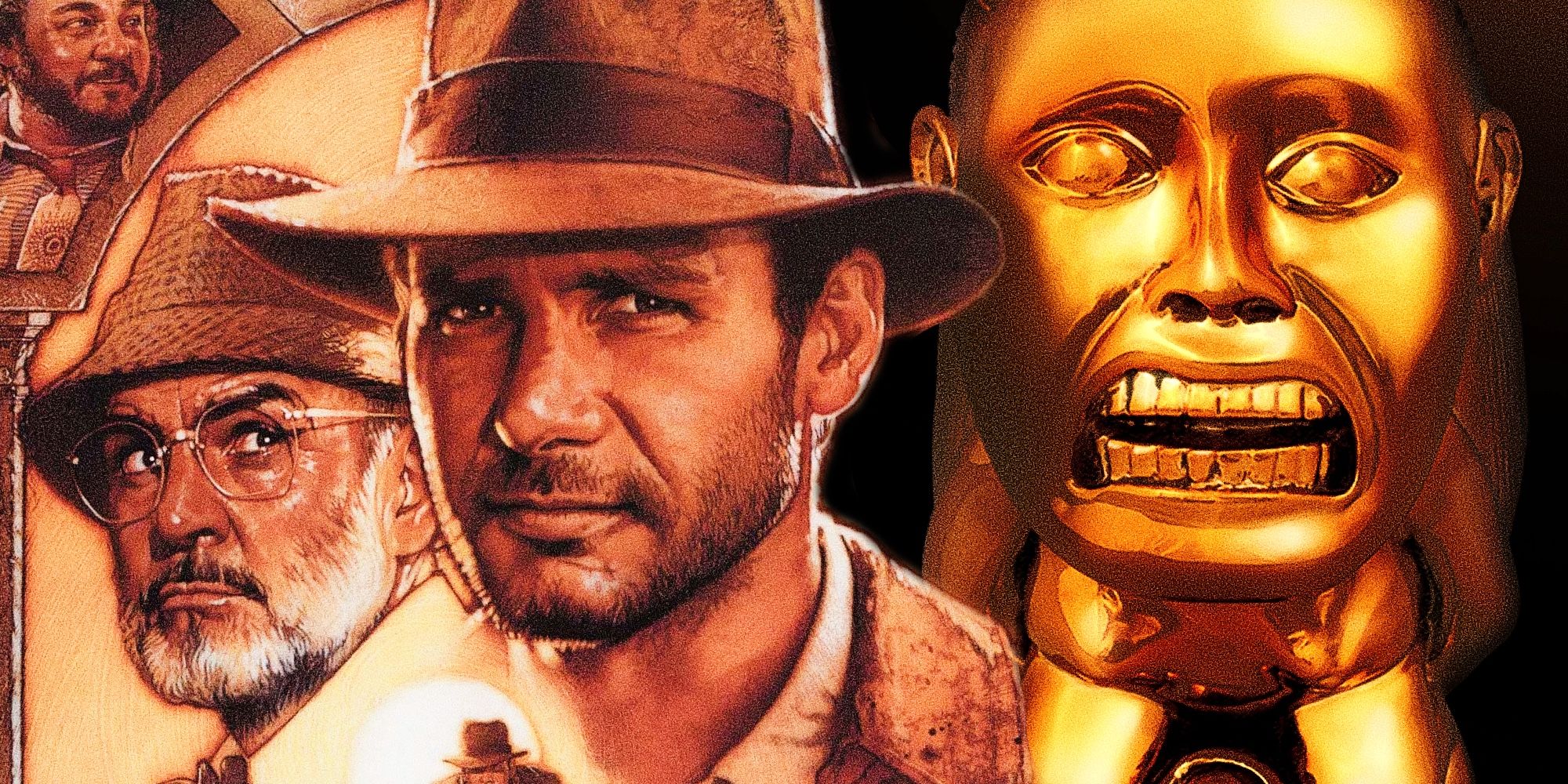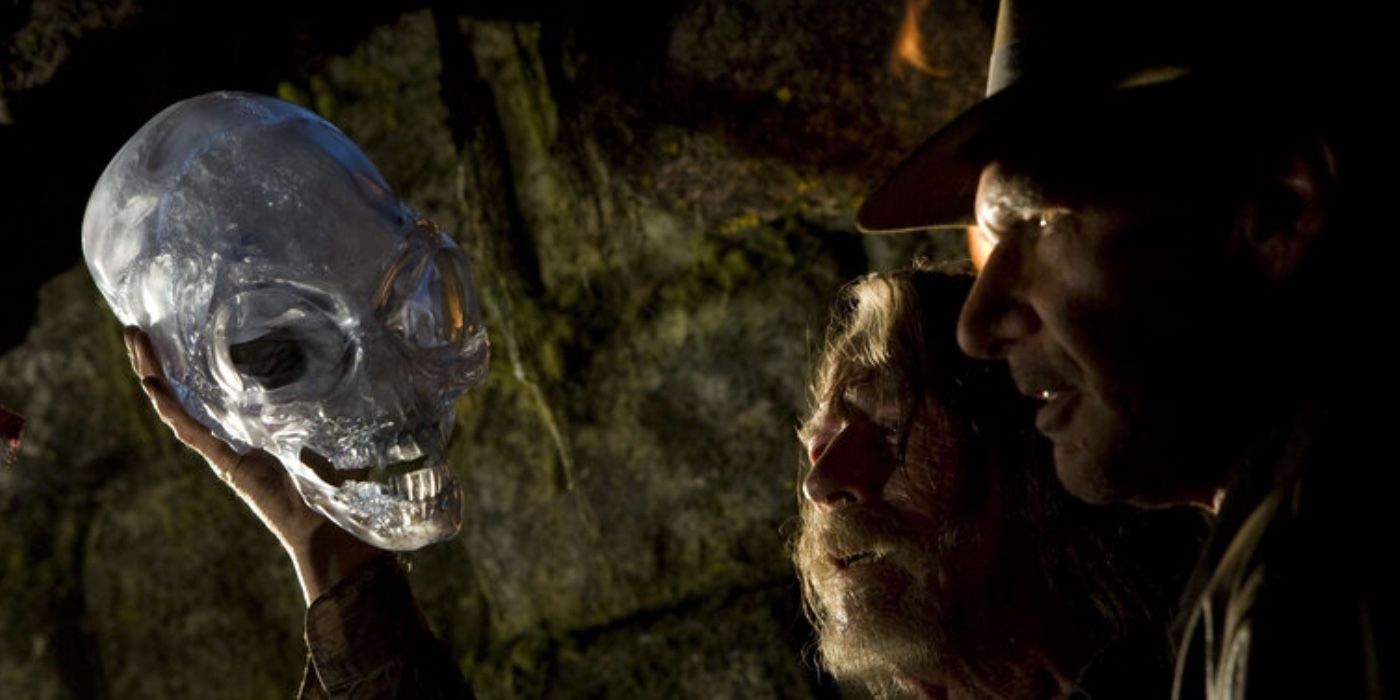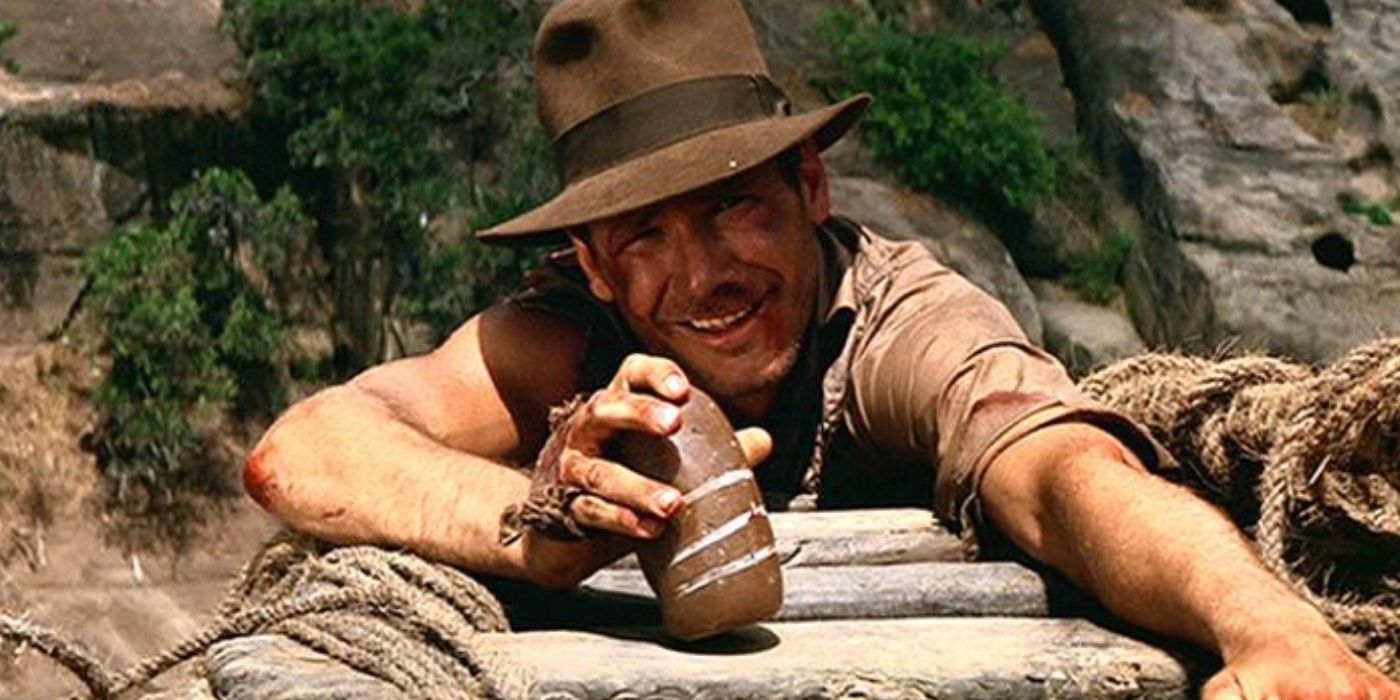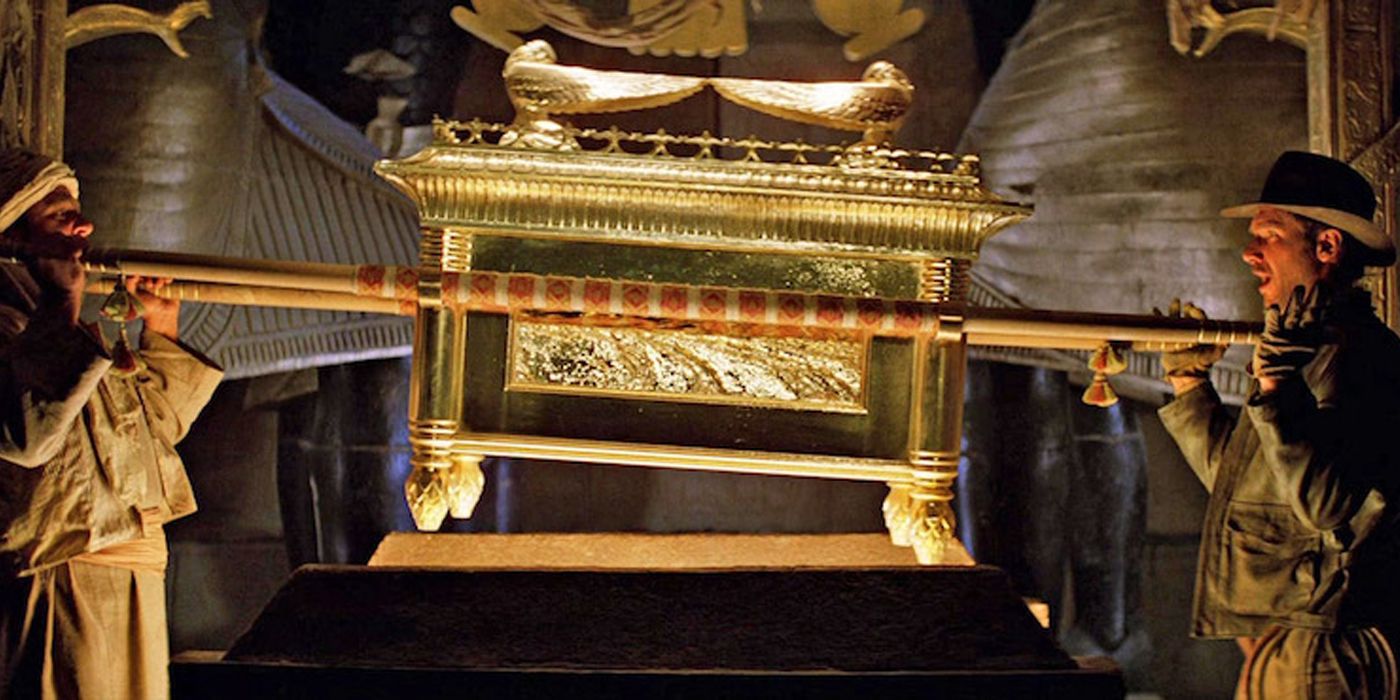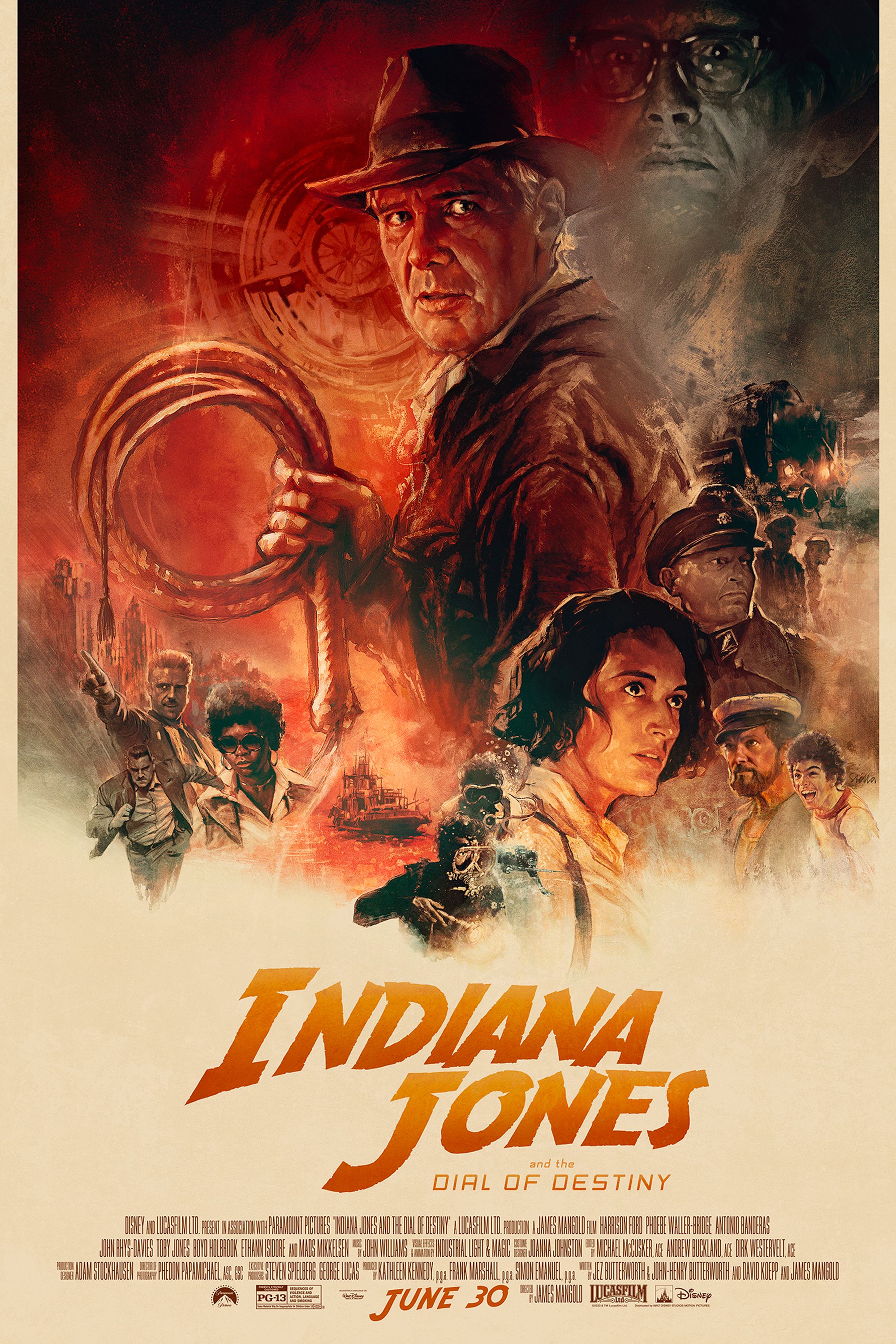The Indiana Jones franchise tasks the eponymous archaeologist with saving precious artifacts from falling into the wrong hands, but how many of the artifacts that appear are real? The Indiana Jones franchise exists as one of the best examples of blending fact and fiction, with many of the artifacts Indiana Jones (Harrison Ford) hunts based on legends and folklore. Some of these items are closer to their real-world counterparts than others, while several Indiana Jones artifacts are so convincing many audiences believe they are real despite being entirely fictitious.
Many of the artifacts showcased in Indiana Jones are primarily used as narrative MacGuffins that are said to imbue their holders with otherworldly powers. The Holy Grail featured in Indiana Jones and the Last Crusade supposedly grants eternal life to "he who drinks" from it, while Sankara stones from Indiana Jones and the Temple of Doom bring prosperity and abundance to the villages that worship them. Many of the Indiana Jones franchise's artifacts meld real-world legends with more grandiose designs functions that still feel credible in the context of Indiana Jones' fantastical settings.
Yet despite the Indiana Jones franchise expertly crafting deep lore for many of the artifacts Indy hunts, most of these legendary items are understandably fictitious. There remain some artifacts, however, that more closely mirror their real-life counterparts, with Indiana Jones and the Kingdom of the Crystal Skull's titular artifacts a prime example here. As a result, here's every real artifact that appears in the Indiana Jones franchise, as well as the historical evidence for their existence.
Crystal Skulls
The crystal skulls of Akator act as the driving force behind the fourth Indiana Jones movie's narrative, with both Indy and Irina Spalko's (Cate Blanchett) KGB hunting the ancient artifacts fervently. Indiana Jones and the Kingdom of the Crystal Skull's climax sees Spalko place the crystal skull back onto the body of the Akator chamber's thirteenth, headless skeleton, causing the aliens to regenerate and fill her mind with a universe's worth of knowledge, killing her. The thirteen skulls allow the alien "archaeologists" to return to their own dimension, sealing Akator in the floodwaters that their UFO craft breaks loose.
While the powers of the Akator crystal skulls and their history as the heads of an alien race are, of course, fictitious, there are numerous real crystal skull artifacts that have been discovered across the world. The most famous crystal skull was unearthed by British explorer F.A. Mitchell-Hedges in 1924, who claimed his daughter Anna had found the skull buried under a collapsed altar inside a temple in Lubaantun, Belize. Mitchell-Hedges toured with the skull from the sixties onwards to great acclaim before turning it over to art restorer Frank Dorland for further expert testing.
Chillingly, Dorland discovered that the skull had been carved against the natural axis of the crystal, a process that should have immediately shattered the skull, as well as noting that there were no microscopic scratches on the skull to indicate it had been carved with metal. Similar crystal skulls are on display in the British Museum and Paris Trocadero, while Mayan and amethyst versions have also been discovered, leading many archaeologists and researchers to question if their origins are indeed otherworldly. Of all the artifacts used for the Indiana Jones franchise, the crystal skulls are by far the closest to real-life items despite Kingdom of the Crystal Skull's fantastical links to extraterrestrial beings.
The Lingam
In Indiana Jones and the Temple of Doom, Indy is tasked with returning a stolen Sankara stone to the northern Indian village of Mayapore. The villagers plead for his aid in retrieving the sacred stone named Shivalinga, which was stolen from their shrine by evil forces in the nearby Pankot Palace. Indy agrees to do so, correctly hypothesizing that the stone is one of the five stones given by the gods to help humanity fight evil. In his final fight with the Thuggee priest Mola Ram, Indy invokes Shiva, the godly creator of the stones, sending his enemy plummeting to his death and proving the power of the Sankara stones to audiences.
Although the Sankara stones were invented by George Lucas as a plot device for The Temple of Doom, there are stones named Lingam that bear striking ties to Indy's recovered Sankaras. The Sankara Stones are based on the Sivalinga Lingam, which are carved symbols representing the Hindu god Shiva. According to Hindu lore, Sankara was a priest who ascended Mount Kalisa, atop which he met the god Shiva before she passed on five stones invested with magical properties that Sankara could use to combat evil.
The Lingam of the Shaivism tradition is a short cylindrical pillar-like symbol of Shiva, made of stone, metal, gem, wood, clay, or precious stones, as seen in The Temple of Doom. These Lingam stones are revered as an emblem of generative power by those practicing Shaivism. The Lingam are commonly found within a lipped, disked structure that is an emblem of the goddess Shakti, with the two portions of the Lingam and disk representing the totality of all existence. While Indiana Jones and the Temple of Doom understandably plays fast and loose with the Sankara stones' divine power and healing properties, they bear stark aesthetic similarities to the real Lingam from Shaivism tradition.
The Ark of the Covenant
The Ark of the Covenant is perhaps the most iconic of artifacts associated with the Indiana Jones franchise, appearing in the aptly named Indiana Jones and the Raiders of the Lost Ark. The Ark is doggedly pursued by the Nazi regime in the movie, with Gestapo agent Arnold Toht (Ronald Lacey) fervently attempting to test its power before bequeathing it to his leader Adolf Hitler. Toht succeeds in wrestling the Ark away from Indy and Marion Ravenwood (Karen Allen) in Raiders' penultimate scene, but as the Ark opens, he and his fellow Nazi troops are obliterated by the divine light emanating from the Ark.
The real Ark of the Covenant elicits intense debate whenever it is mentioned, mainly due to the fact it remains lost today. While the arguments for its existence tend to tread between fact and fiction, there is both historical and biblical precedent to suggest that the Ark existed at some point in time. In the Book of Exodus, the Ark consists of a pure gold-covered wooden chest with an elaborate lid called the Mercy seat, under which sits the two stone tablets of the Ten Commandments.
Since its disappearance from the Biblical narrative, there have been several claims of explorers having discovered or possessing the Ark, and several possible places have been suggested for its location - although none have been verified. Furthermore, archaeologists have also discovered tangible evidence of the Ark's existence at some point while still reaching the consensus that it may since have been destroyed or lost to the sands of time. While by the letter of the law, the Ark of the Covenant may not be considered a genuine artifact due to the legend surrounding it, there is enough consistent historical corroboration on its appearance and movements to claim it is a real item from which the plot of the first Indiana Jones movie was derived.

